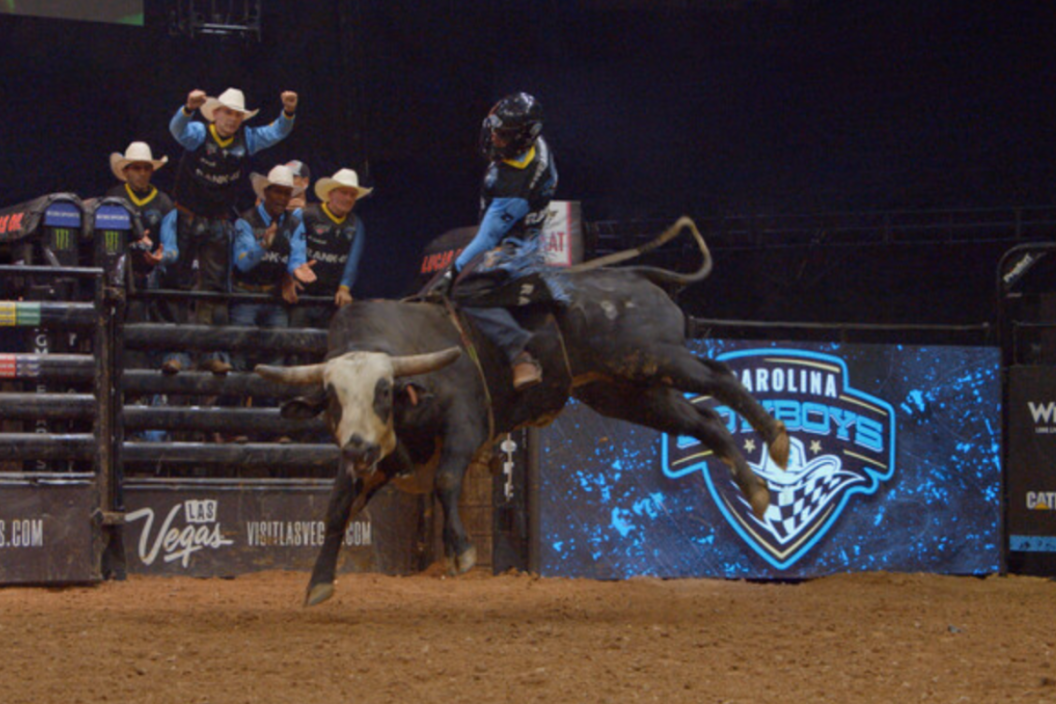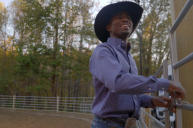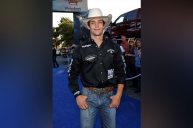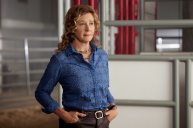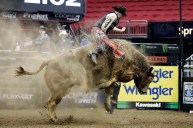Rodeo is just so hot right now. First you had Yellowstone, with its barrel racing and broncos. Then Hallmark Channel launched Ride, a drama about a rodeo family in Colorado. And now, Prime Video has launched The Ride, a reality series that follows riders and coaches as they compete in the Professional Bull Riders' team series.
Videos by Wide Open Country
With its look at the riders who put their lives on the line to do the sport they love, The Ride hopes to offer viewers answers to questions such as "Why the heck would anyone do that?" and "Is it really that hard to ride a bull?" Wide Open Country talked to Eric Detwiler, executive producer of The Ride, about how the series came to be, what he learned about filming a bucking bull, and why in the world these riders risk their lives every single day.
Wide Open Country: You've produced shows such as Love Is Blind, Married At First Sight and Perfect Match. How did you end up looking into bull riding?
Eric Detwiler: Our development team came across an article right at the beginning of 2022 that talked about PBR's new team format, which we thought created a once-in-a-lifetime opportunity to be embedded with a sport that's going through a major change as to how the competition is played. We knew that if we could find a way to get inside PBR, to get access, storytelling would come because the stakes are so high and so real in the sport of bull riding. Combine that with the entire organization going through a transformative stage, and it just created a natural opportunity for great storytelling.
Whether you're doing a relationship show or cooking competition or a real estate show or a sports docuseries, storytelling is storytelling. You're always trying to find amazing characters who have something at stake, and this opportunity with PBR was a perfect storm of just that.
WOC: How did you figure out which riders to follow? Did you start with more and whittle it down to the ones you really hone in on, or how did it work?
ED: When that article came out, it was the beginning of 2022, and we knew the first event was going to happen in June. The draft was coming very quickly, so we didn't have a huge amount of time to prep. But we have an amazing team at Kinetic Content that went out and contacted over 75 different riders and coaches within the PBR. They wanted to get interviews with them to figure out, like "What is their personality? How are they feeling about what the Team Series could mean for bull riding? What's at stake for them outside of the bull riding arena and what's at stake for them in the competition?"
After talking to these riders and coaches and asking them those types of questions, we were able to narrow it down to a group of guys who I think all approached the sport in a different way and have different things at stake. It was important to us to find a diverse group of people who are at different phases in their career and who ride for different reasons. They're all thinking about what the team series means to professional bull riding in different ways.
You could look at somebody like Ezekiel Mitchell, who is on the rise but doesn't get drafted, instead signing as a free agent with the Austin Gamblers and having so much to prove. You look at somebody like Eli Vastbinder, who went in the first round to Oklahoma. He really struggled with the team format.
These are guys who are used to riding solo and only being responsible to themselves and their family. If they fall off or don't have a qualified ride, it's all done. It doesn't affect anyone else other than them and their family. But now in this team series, you realize a guy who should have been a leader of that team is really having a hard time adjusting to what it means to be part of a team when it comes to bull riding.
Other guys like Chase Outlaw really took to the teams, though, and so you see that evolution across the series. Eli and Chase are on the same team, and it's really interesting to see, on the show, their approach to the team format and what it means to be a part of a team and how you align yourself individually as a part of a larger group. That was a really interesting thing as a storyteller to unpack and study.
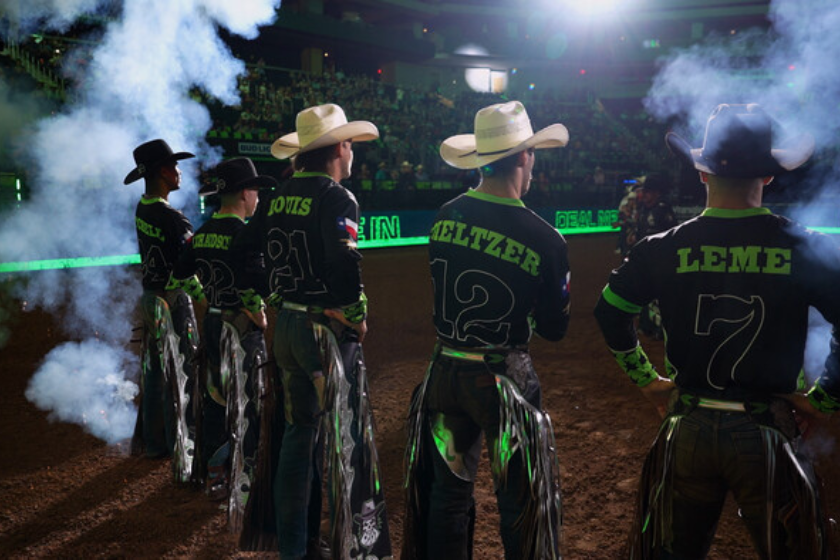
Prime Video
WOC: One thing I was surprised about, as someone who knows very little about professional bull riding, is how many Brazilians there are in the sport. That's something you touch on a little in the show, though.
ED: The Brazilian side of PBR is really fascinating. Jose Vitor Leme is arguably the greatest bull writer of this generation. There's a whole group of them, and they all live generally in the same area around Decatur, Texas. There's a strong community there despite being on different teams.
PBR has started to do some recruiting efforts to go down to Brazil to find the next generation of riders to recruit them up into the PBR. If we're fortunate enough to do another season of The Ride, that's something I could totally see us following because the sport is global in that way. It has such an appeal in America and to Western lifestyle fans; but you look at the reach that it's got in South America, and it's huge.
WOC: The show is available in 240 countries and territories. What does that kind of reach mean for the show, and what do you think it could mean for the sport?
ED: For me, I just want to connect great storytelling with viewers who want to watch something, be entertained, learn something, and connect with these characters.
I'll let PBR answer that question for themselves, but I think they're looking to grow as an organization. Prior to working on the show, I'd been to bull riding events and different rodeos, but I was not a super fan of the sport. I just understood how it worked. But coming into the team series, I'm watching it now just as a spectator and as a fan. It's so much more of an enjoyable and digestible product. When you watch it in the stadium, you have all of these collision points where teams are going head to head, and there's way more at stake on individual rides at various points throughout the night and across the season. Whereas in the traditional format of PBR, when the riders are competing individually, the top ride could come at any point in the night when you're there watching and you never really know when it's going to happen. Now, there's so much more drama, and the emphasis is on games coming to a conclusion or a weekend tournament coming to a conclusion and how they name a winner. I think the team series is a much more enjoyable, fun experience, at least for me.
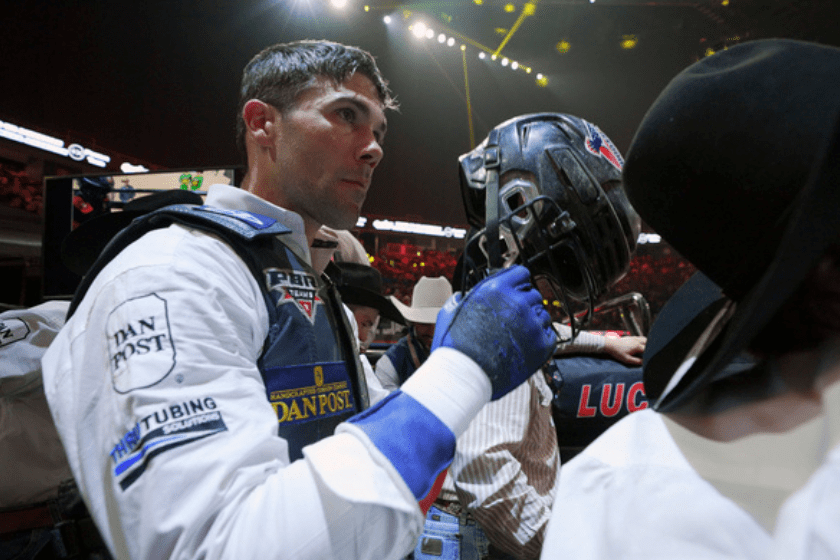
Prime Video
WOC: How much buy-in did you have from the PBR itself? Did they have any say over the content of the show?
ED: We certainly couldn't have done The Ride without the cooperation of PBR. They were fantastic partners in the project. They opened doors for us, they made the introductions to the riders, and they gave us uninhibited access backstage in the arena. Without them, we wouldn't have been able to do the show.
That being said, we produced the show independently of them, in terms of creative control. That's a really liberating feeling as a producer as well, because we could tell the stories we wanted to tell and that we felt like were the most important, and they weren't censoring us. The trust that we were able to build in a very short amount of time was vital, I think, to making the show work the way it does.
WOC: What were some of the challenges of actually capturing the action? Did you have to hire documentary filmmakers who were also really adept at capturing sports action, for instance?
ED: That speaks a little bit to our partnership with PBR. They produce the live broadcasts that air on CBS Sports and on PlutoTV. We had access to all of that footage in addition to our own cameras that we were also bringing to each of the events.
The challenge is that it's tight up in the bull chutes, especially when you're trying to get extra cameras and extra crew in place. It took a little while for us to get the PBR staff to understand and trust our crews being there; but once that switch flipped, we were able to capture so many amazing things that I don't think I've ever really seen on television before, at least from the angles that we were able to capture. By the midway point of the season, I think we were really hitting on all cylinders in terms of our coverage.
But what I love in addition to the action inside the arena is when we're outside with the riders at home on their ranches. There's an episode where we're with Dakota Louis, who's a rider from the Austin Gamblers, and he lives on a reservation up in Montana. We were able to go up with just him and his son and spend some time with him there. The cinematography that was done on those scenes, in particular ... it's just beautiful out there.
To be able to see the world beyond what happens inside the arena was really important to us. We wanted to show a real, well-rounded picture of these riders to understand what their motivations are and how they live their lives outside competing in the world's most dangerous sport.
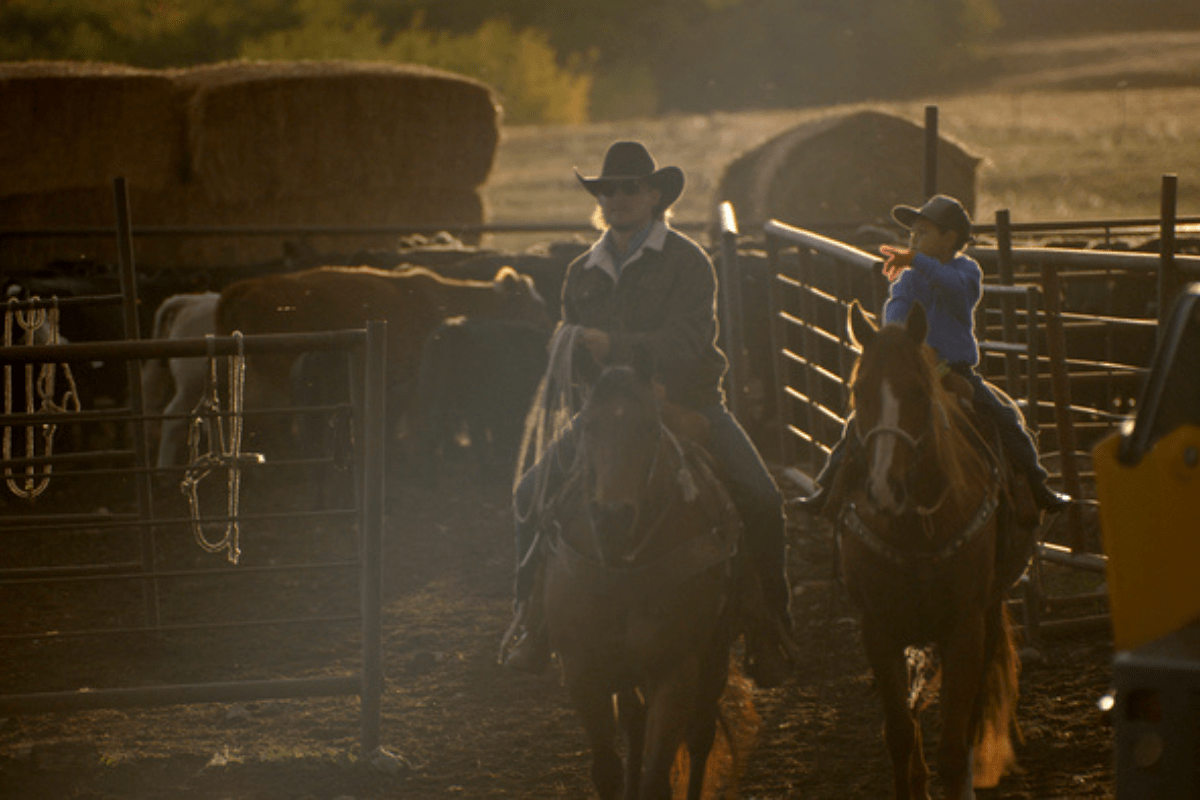
Prime Video
WOC: It also helps add some dimension when they actually are riding. Like, when we meet Eli's twin daughters and wife. Every time he rides, after it's just like, "What if something happened to him?" It's terrifying.
ED: Yes, I mean, you sort of combo that bit at the end of episode 1 or the top of episode 2 with Eli and Paige and girls. And then you've got the story of Jerome Davis, who is the coach of the Carolina Cowboys and who was a world champion until he was paralyzed while bull riding in the '90s. You see what course his life took when he was faced with that huge obstacle.
The risk they're taking on is real for these riders, whether it's for the financial gain that they're getting from the prize money that they win or just the reward and the love for the sport. It's definitely dangerous.
WOC: Were you worried about that at all, making the show? Like, oh my god, I hope one of these guys we're following doesn't get incredibly hurt? Eli's knee twists early on in the season, and I cringed even watching that.
ED: I was constantly concerned for the riders. The thing that sticks in my head — and it's really covered in episode 3 with Chase Outlaw — but he sustained this injury to his face a few seasons ago, and the injury that he sustained a few years back where he broke almost every bone in his face. And he came back! These guys are so resilient and so dedicated.
I was worried for them personally, but I know their commitment to the sport. These guys ride hurt all the time because they either feel like they have to or they just want it that badly. When you're documenting people who are willing to live their lives that way, you can't help but want to watch and understand why they do that. That's one of the main thrusts of the show, aside from bringing the world of the team series to an audience. It's helping people understand why these guys do what they do.
READ MORE: 'Yellowstone' Is Officially the Most-Watched Scripted Show on Television
